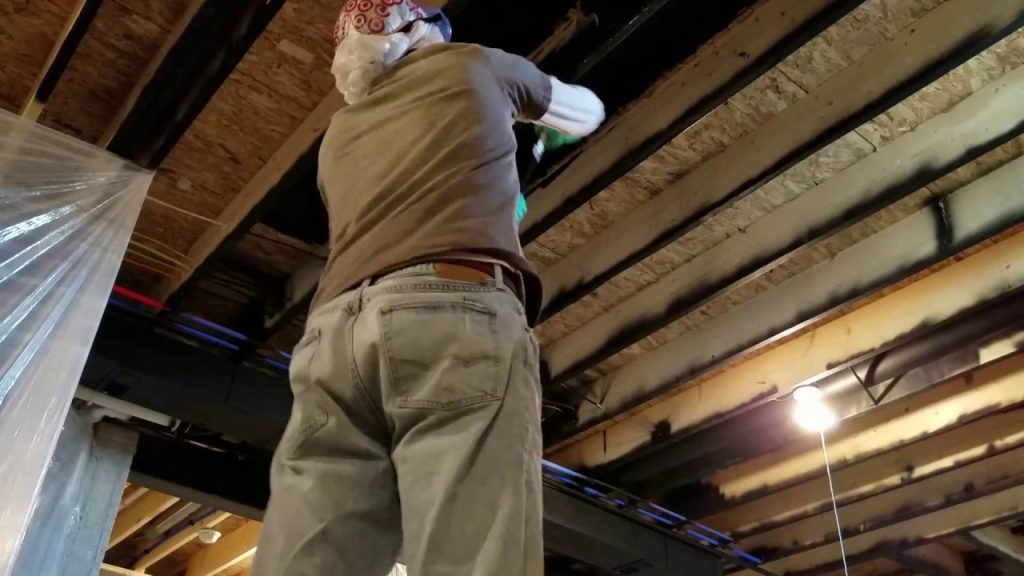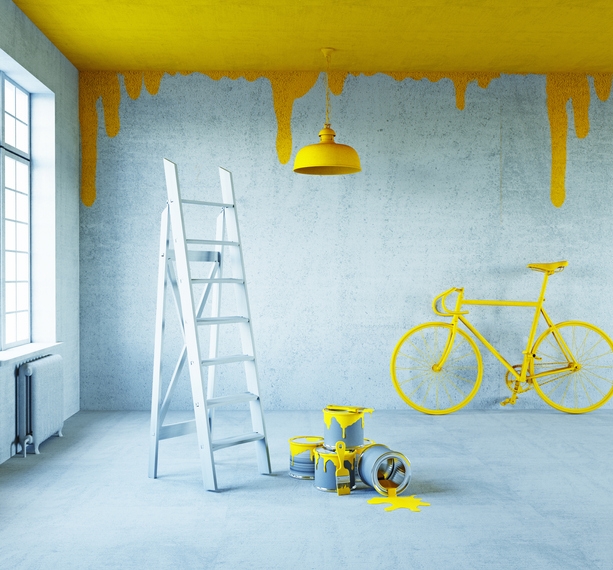Are you considering transforming your basement by giving it a fresh coat of paint? Discover the ins and outs of the “Cost to Paint Basement Ceiling” to make informed decisions and breathe new life into your space.

Exploring the Basics: Cost to Paint Basement Ceiling
Introduction
Painting the basement ceiling is a fantastic way to enhance the overall aesthetics of your space. Whether you’re turning your basement into a cozy living area, a home gym, or a game room, understanding the costs involved is crucial for effective budgeting.
Factors Influencing the Cost
- Ceiling Material: The type of material your basement ceiling is made of can significantly impact the cost of painting. Different materials, such as drywall, wood, or exposed pipes and ductwork, may require specific preparation and paint application techniques.
- Ceiling Height and Accessibility: The height of your basement ceiling and its accessibility can affect the overall cost. High ceilings may require specialized equipment, and limited accessibility can make the painting process more time-consuming.
- Preparation Work: The condition of the existing ceiling and the amount of preparation needed play a crucial role. If the ceiling requires repairs, cleaning, or priming before painting, these factors will contribute to the overall cost.
- Number of Coats: The number of paint coats applied will influence the cost. While a single coat may be sufficient for some surfaces, others may require multiple coats to achieve the desired finish.
- Type of Paint Used: The choice of paint, including the quality and brand, can affect costs. Higher-quality paints may come with a higher price tag but offer better durability and a more polished finish.
Calculating the Cost: A Step-by-Step Guide
1. Measure the Ceiling Area
Begin by measuring the total square footage of the basement ceiling. This will serve as the foundation for estimating the amount of paint needed.
2. Determine the Type of Paint
Choose the type of paint based on your preferences and the requirements of the ceiling material. Consider factors like moisture resistance and ease of cleaning for optimal results.
3. Assess the Condition of the Ceiling
Evaluate the condition of the ceiling to determine if any repairs or additional preparation work is necessary. Addressing these issues upfront can prevent complications during the painting process.
4. Obtain Quotes from Painters
If you’re considering hiring professionals, obtain quotes from several painters. Compare their estimates, taking into account the scope of work, materials, and labor costs.
5. Factor in Additional Costs
Consider any additional costs, such as primer, masking materials, and tools. These small expenses can add up, so it’s essential to include them in your overall budget.
Making Informed Decisions: Cost to Paint Basement Ceiling
1. DIY vs. Professional Services
Decide whether to embark on a do-it-yourself (DIY) project or enlist the services of professional painters. While a DIY approach can save money, professionals bring expertise and efficiency to the table.
2. Budget-Friendly Tips
Explore budget-friendly tips to minimize costs, such as selecting cost-effective paint options, doing your own preparation work, and comparing prices from different suppliers.
3. Long-Term Benefits
Consider the long-term benefits of investing in a quality paint job. A well-painted basement ceiling not only enhances the visual appeal but also contributes to the overall durability and cleanliness of the space.
Conclusion
In conclusion, understanding the “Cost to Paint Basement Ceiling” is essential for anyone looking to revitalize their basement space. By considering factors like ceiling material, height, and preparation work, you can make informed decisions that align with your budget and vision for the space.
Whether you choose to take the DIY route or hire professionals, investing in a well-executed paint job can transform your basement into a welcoming and aesthetically pleasing area. Take the time to calculate costs, explore options, and embark on a painting project that adds value and character to your home.
